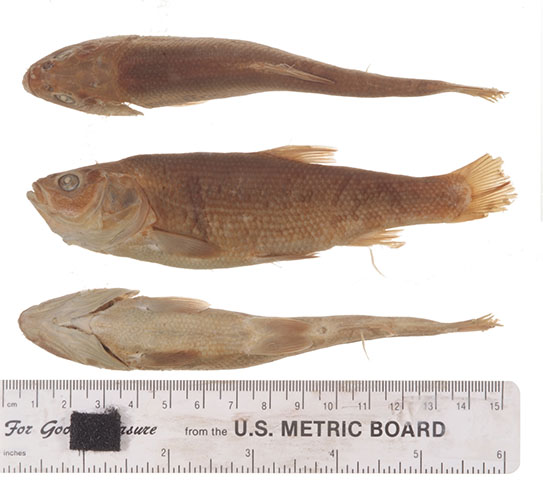| Leuciscidae (Minnows), subfamily: Laviniinae |
| 56 cm TL (male/unsexed); max. reported age: 12 years |
|
benthopelagic; freshwater |
| North America: Snake River system above Shoshone Falls in Wyoming and Idaho; Lake Bonneville basin (including Great Salt Lake drainage and Sevier River system) in southeastern Idaho and Utah, USA. Introduced into east Nevada, upper Missouri River basin in Montana, and Colorado River drainage in Wyoming and Utah. |
|
Dorsal soft rays (total): 9-9; Anal soft rays: 8-9. Gila atraria can be distinguished by the following characters: deep, compressed body; large eye; short, blunt snout; 45-65 scales on lateral line; dorsal fin usually with 9 rays; anal fin with 8 rays; pharyngeal teeth 2,5-4,2; olive-brown to blue-black above; yellow to brassy side; clear to olive-yellow fins; and large males with yellow to gold-fin bases, mouth and side of the head, may be gold overall (Ref. 86798). |
| Occurs in lakes, quiet pools of headwaters, creeks and small to medium rivers. Often found in vegetation over mud or sand (Ref. 86798). |
|
Least Concern (LC); Date assessed: 07 February 2012 Ref. (130435)
|
| harmless |
Source and more info: www.fishbase.org. For personal, classroom, and other internal use only. Not for publication.

